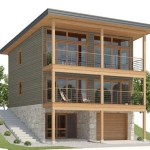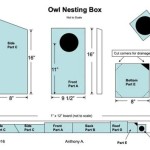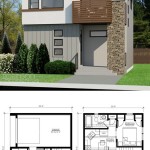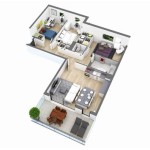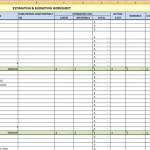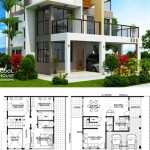2-Story House Plans With Basement And 3-Car Garage: A Comprehensive Overview
The combination of a two-story house plan, a basement, and a three-car garage represents a significant investment in both space and functionality. This architectural configuration caters to homeowners seeking ample living area, storage solutions, and secure parking for multiple vehicles. Understanding the considerations involved in selecting and implementing such a plan is crucial for a successful construction project.
This article will explore the multifaceted aspects of two-story house plans featuring basements and three-car garages. We will examine the advantages and disadvantages, design considerations, cost implications, and regional variations that influence the overall feasibility and desirability of these intricate home designs. Detailed planning and careful execution are essential to realize the full potential of this substantial residential concept.
Advantages of a 2-Story House Plan with a Basement and 3-Car Garage
Opting for a two-story structure inherently maximizes the use of a given building footprint. By stacking living space vertically, the need for extensive land is minimized, making it a suitable choice for properties with limited acreage or those located in densely populated areas. This vertical expansion also translates to a larger yard for recreational purposes or landscaping, enhancing the overall property value and appeal.
A basement provides a versatile space that can be adapted to a variety of needs. It can serve as a recreational area, a home theater, a home office, or even an additional living suite. The basement's subterranean location also offers natural insulation, which can contribute to energy efficiency by maintaining a more consistent temperature year-round. Moreover, a basement provides significant storage capacity, addressing the common need for organized space to store seasonal items, tools, and other belongings.
The inclusion of a three-car garage addresses the needs of households with multiple vehicles, offering secure parking and protection from the elements. In addition to accommodating vehicles, the extra garage space can be utilized for storage, a workshop area, or a home gym. This dedicated space helps to maintain the overall organization and cleanliness of the main living areas. The three-car garage also adds resale value to the property, appealing to a broader range of potential buyers who value ample parking and storage.
Design Considerations for 2-Story House Plans with Basement and 3-Car Garage
The overall design of a two-story house, including the placement and integration of the basement and three-car garage, necessitates careful consideration of several factors. These factors include the architectural style, lot orientation, local building codes, and the homeowner's specific needs and preferences.
Architectural style plays a crucial role in harmonizing the elements of the house. Common styles compatible with this type of plan include traditional, contemporary, and modern designs. The chosen style should reflect the surrounding neighborhood and create a cohesive aesthetic. The exterior materials, such as siding, brick, and roofing, should be selected to complement the architectural style and provide long-term durability.
Lot orientation influences the placement of the house on the property to maximize natural light and ventilation. The optimal orientation considers the path of the sun throughout the day to minimize heat gain in the summer and maximize solar exposure in the winter. The placement of the garage should also be considered in relation to the driveway and the street, ensuring ease of access and minimizing visual impact.
Local building codes dictate specific requirements for construction, including setbacks, height restrictions, and fire safety regulations. Adherence to these codes is essential to ensure the safety and legality of the project. It is crucial to consult with local authorities and obtain the necessary permits before commencing construction. Furthermore, the design must take into account any specific site conditions, such as soil type and drainage, to ensure the structural integrity of the house and prevent potential problems in the future.
The layout of the interior spaces should be carefully planned to optimize functionality and flow. The location of the stairs leading to the basement should be convenient and accessible from the main living areas. The connection between the garage and the house should also be carefully considered, often incorporating a mudroom or utility area to provide a transition space and prevent dirt and debris from entering the main living areas. The design of the living spaces should also take into account the size and layout of the furniture and equipment that will be used in each room.
Cost Implications of 2-Story House Plans with Basement and 3-Car Garage
Constructing a two-story house with a basement and a three-car garage generally involves higher costs compared to simpler single-story homes without these features. The additional costs stem from the increased size of the structure, the complexity of the foundation work, and the materials required for the basement and the larger garage.
The excavation and foundation work for the basement represent a significant portion of the overall cost. The depth of the excavation, the soil conditions, and the need for waterproofing all influence the cost of the basement construction. In some regions, the presence of bedrock or a high water table can further increase the cost of excavation and foundation work. Furthermore, the cost of reinforcing the foundation walls to withstand the pressure of the surrounding soil can add to the overall expenses.
The larger size of the house and the garage necessitates the use of more materials, including lumber, concrete, roofing, siding, and insulation. The selection of higher-end materials, such as custom cabinetry, premium flooring, and energy-efficient windows, can further increase the cost of the project. The complexity of the design, including intricate rooflines and custom architectural details, can also contribute to higher material and labor costs.
The increased complexity of the plumbing, electrical, and HVAC systems also contributes to the higher cost of this type of house plan. The basement requires additional plumbing for bathrooms, laundry rooms, and wet bars, as well as additional electrical wiring for lighting, outlets, and appliances. The three-car garage requires additional electrical circuits for garage door openers, lighting, and power tools. The HVAC system must be sized appropriately to heat and cool the larger house, including the basement, which may require additional ductwork and equipment.
Labor costs also play a significant role in the overall cost of the project. The excavation, foundation work, framing, roofing, plumbing, electrical, and HVAC work all require skilled labor, which can be a significant expense. The complexity of the design and the quality of the workmanship can also influence the labor costs. It is crucial to obtain multiple bids from reputable contractors to ensure that the labor costs are competitive and reasonable.
Regional Variations and Building Codes
The design and construction of two-story house plans with basements and three-car garages are subject to regional variations in building codes, climate conditions, and local architectural preferences. It is crucial to adapt the design to these regional factors to ensure the safety, durability, and aesthetic appeal of the house.
Building codes vary significantly from region to region, particularly in areas prone to natural disasters such as earthquakes, hurricanes, and floods. In earthquake-prone regions, the house must be designed to withstand seismic forces, requiring reinforced foundations and structural connections. In hurricane-prone regions, the house must be designed to withstand high winds, requiring reinforced roofs and impact-resistant windows and doors. In flood-prone regions, the house must be elevated above the base flood elevation to protect it from flood damage.
Climate conditions also influence the design and construction of the house. In colder climates, the house must be well-insulated to minimize heat loss and reduce energy consumption. The basement walls must be properly insulated to prevent freezing and thawing, which can damage the foundation. In warmer climates, the house must be designed to minimize heat gain and maximize natural ventilation. Shade trees and awnings can help to reduce the amount of sunlight that enters the house, while strategically placed windows and doors can promote cross-ventilation.
Local architectural preferences also play a role in the design of the house. In some regions, traditional architectural styles are more common, while in others, contemporary or modern styles are preferred. The exterior materials, colors, and details should be selected to complement the surrounding neighborhood and reflect the local architectural traditions. It is important to consider the aesthetic impact of the house on the surrounding community and to ensure that it blends in harmoniously with the existing homes.
The availability of skilled labor and materials also varies from region to region. In some areas, skilled tradespeople may be in short supply, which can drive up labor costs. The cost of materials can also vary depending on the proximity to suppliers and the local demand. It is crucial to research the local market conditions and to factor these factors into the budget for the project.
In summary, two-story house plans with basements and three-car garages offer many advantages in terms of space, functionality, and value. Careful planning, attention to detail, and adaptation to regional variations are essential to ensure the successful completion of such a project. The design should be tailored to the specific needs and preferences of the homeowner, while also adhering to local building codes and considering the climate conditions and architectural preferences of the region. By carefully considering these factors, homeowners can create a comfortable, functional, and aesthetically pleasing living space that meets their needs for years to come.

Stylish And Smart 2 Story House Plans With Basements Houseplans Blog Com

Two Story 4 Bedroom Home Plan With 3 Car Garage

2 Story House Plans With 3 Car Garage Houses Big

Craftsman House Plan With Walk Out Basement 4968

Stylish And Smart 2 Story House Plans With Basements Houseplans Blog Com

European Style With 4 Bed Bath 3 Car Garage Dream House Plans Basement Floor

Stylish And Smart 2 Story House Plans With Basements Houseplans Blog Com

Pendleton House Plan Modern 2 Story Farmhouse Plans With Garage

Plenty Of Storage Our Favorite 3 Car Garage House Plans Houseplans Blog Com

Two Story 4 Bedroom Home Plan With 3 Car Garage
Related Posts

